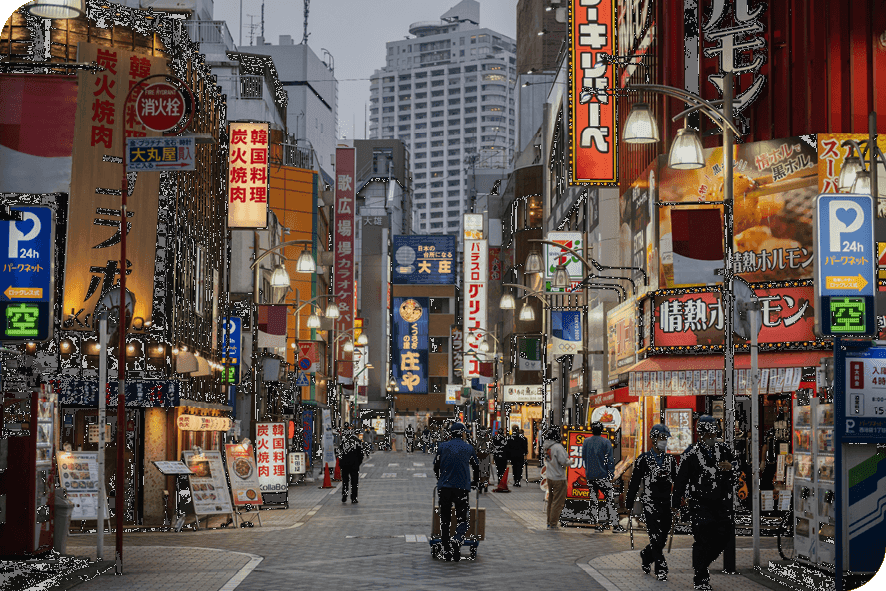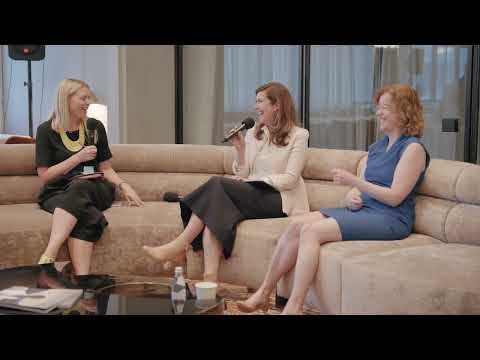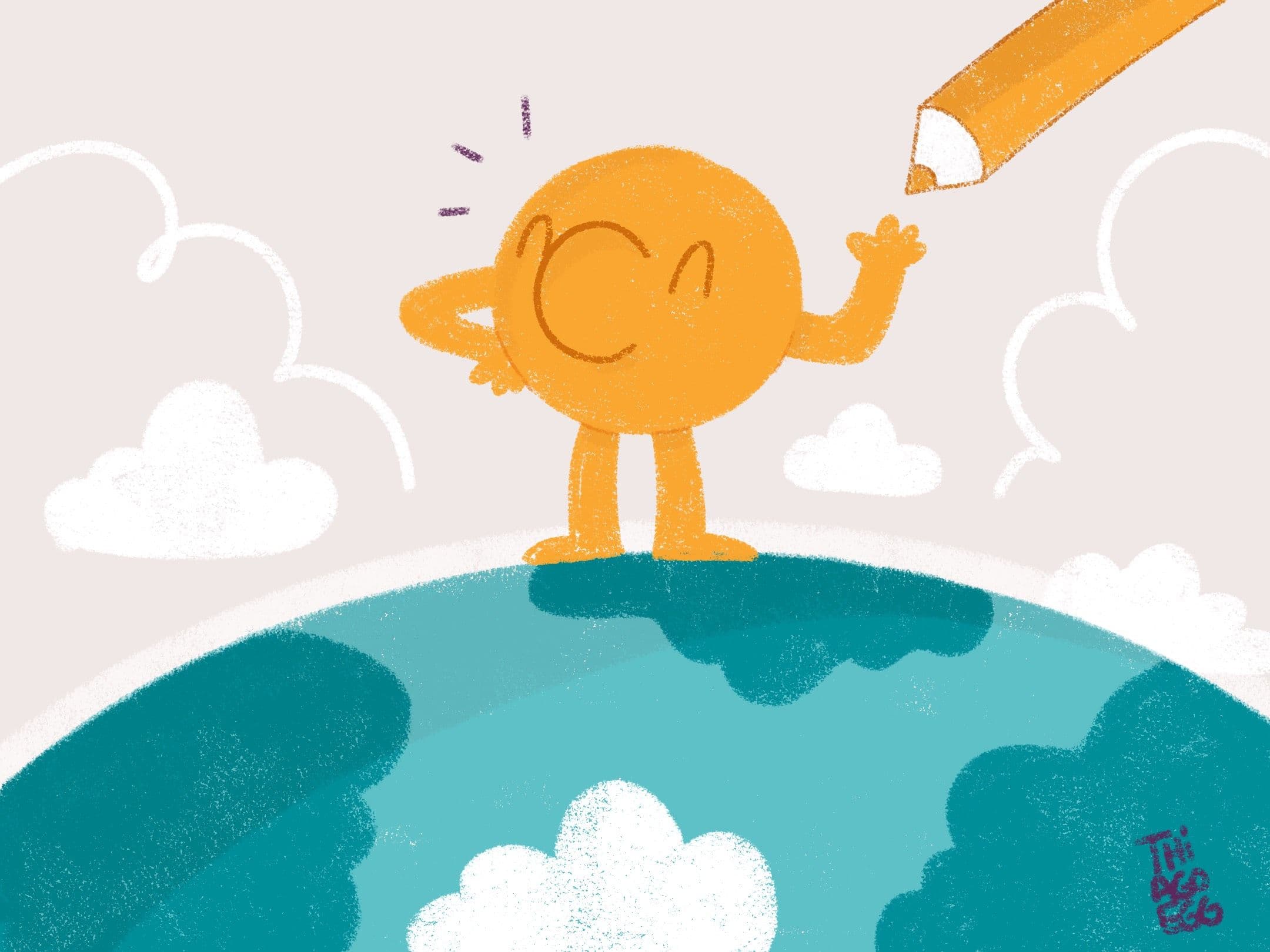
06/04/2023
Children's book: a fun way to learn Circular Economy
Culture and Education are the main ways to understand the Circular Economy as an alternative for a more sustainable world.
And since April is the children's book month, let’s honor this fun literary universe, remembering the first Circular Movement (MC) publication for children: The Fabulous Journey of Muti and the Libelautas.
Like any good children's work, "Muti's Book" came to stimulate, in a playful way, the critical and creative thinking of the little ones on the subject of circularity in a story full of colors and learning.
Today we are going to get to know the backstage of this publication with a very special interview that our designer and illustrator, Thiago Egg, gave to us. He told us how Muti came about and also on the development, together with writer Claudia Pucci Abrahão, of the adventures of the first book starring the MC's messenger.
If you've already read or are still going to read about this adventure, it's worth checking out this chat. After all, the Children's Book Day - celebrated worldwide (2/4) and in Brazil (18/4) – also aims to recognize and value the authors.
Circular Movement Interviews: Thiago Egg
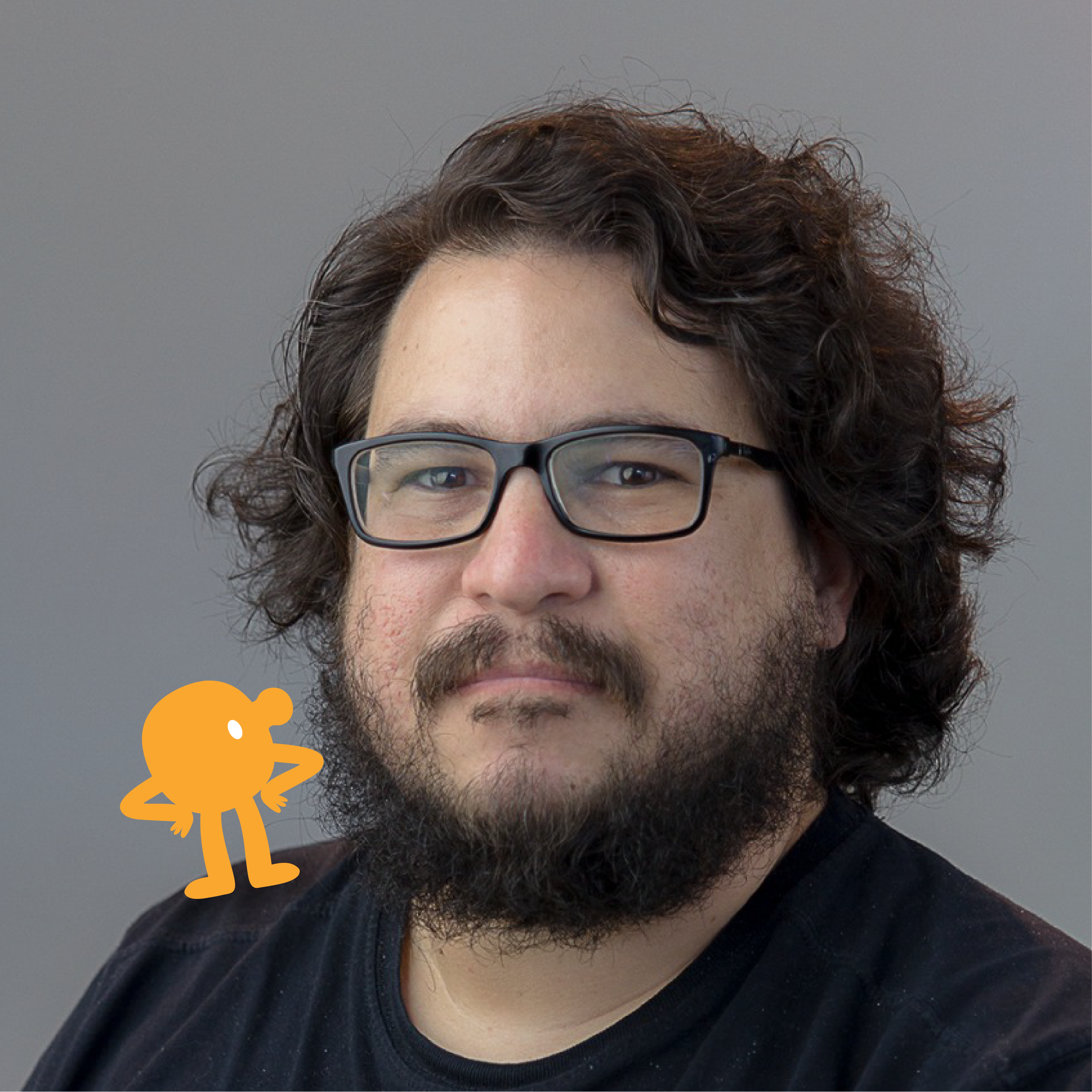
Circular Movement (CM) - Tell us about the beginning of the story with the Circular Movement and the process of creating Muti. How did the idea come about?
Thiago Egg (TE) - I was invited to create the Movement’s visual identity, and during that work, also thinking about a name for the initiative, the idea of a character came up. Muti was born that way.
The Movement’s logo is formed by two circles that represent a planet falling apart and creating another one in a fluid and endless cycle. In the midst of this transformation, a drop between the circles reminded me of a funny nose. I decided to put a little eye and then Muti was born - it is the center of this cycle.
CM - How does Muti’s design incorporate Circular Economy concepts? TE - Well, Muti was born at this junction of this drawing of worlds, the old and the new. For me it is the representation of this perfect renewal cycle. As the name comes from “mutant”,, Muti is the symbol of renewal, transformation, reuse, adaptation, an ideal spokesperson for the message we want to convey.
CM - After becoming a cartoon, puppet, graffiti... Muti became a book and gained friends. How was illustrating The Fabulous Journey of Muti and the Libelautas?
TE - I think that each creation is a new birth; not only of ideas, but also of an entire universe involved in them. The universe where Muti is inserted has always been made with the contribution of many people. It is formed according to each of these activities where it appears.
In the book it was no different. The need arose to create characters that would not only interact with Muti to tell the story, but that could also be a mirror for the children who are reading. This way we can make it easier to understand the message to be conceived to all of us.
CM - How was the creative process with Claudia Pucci? What were the main inspirations for building the characters and settings for the work?
TE - It was amazing, we spent hours talking about the plot, what these characters would be like and the whole universe they would be inserted in. The inspiration came from our own experiences, as children and with our children.
I remember Claudia bringing up the idea for the square - which was inspired by the square in her neighborhood - and all the transformation that was being done, and everything they still wanted to put into practice there. It was a lot of fun!
CM - Is it known how Muti plans to continue its saga? Does Muti have a message for us?
TE - One of the things that emerged during the creation of the book were the individual stories of each of the characters, and the possibility of using them in many other adventures and situations very close to our reality, with Muti, of course.
CM - Now, tell us, how did your relationship with art, graphic design and illustration begin? What were your main inspirations?
TE - Well, it all started as a child. Like every child, the first contact with drawing and creation was in my childhood. I used to draw everywhere, and I never stopped.
I’ve always loved comics and I think my biggest inspirations come from there. Ziraldo, Angeli, Laerte, Glauco, Bill Watterson were the ones I read the most as a child and are still great references today. Over time, many other [inspirations] came.
I graduated in graphic production and have been working with graphic design and illustration for 20 years, but I worked in several professions before that, and each one of them helped me define what I do today.
MC - Circular Movement encourages everyone to interact with Muti, including learning to draw the character. To close the interview, can you teach us?
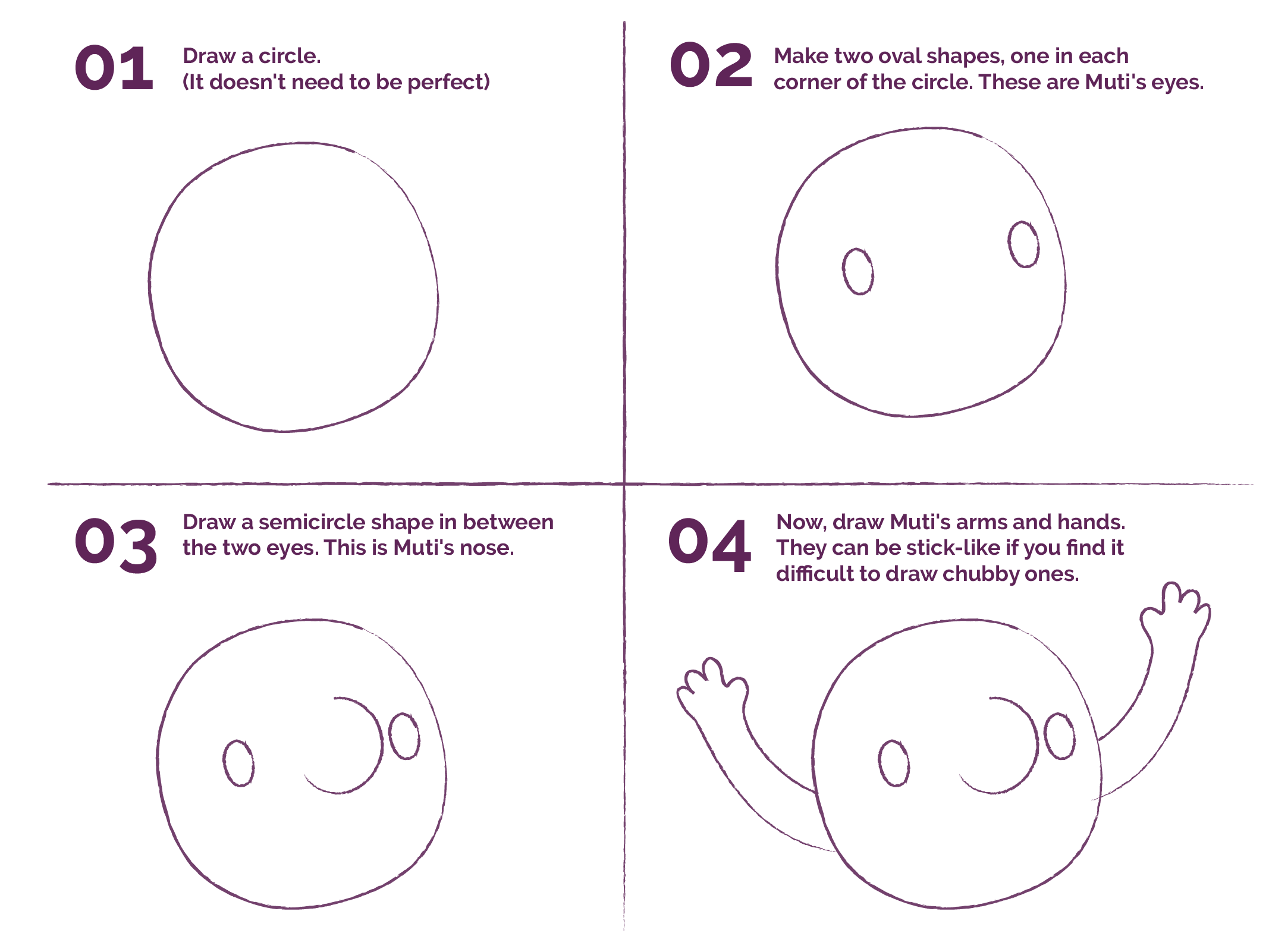

Your turn! Draw Muti and tag us on Instagram!
The messenger of the Circular Movement was created with the idea that everyone can learn to draw it. Call the family designers, draw your Muti and tag our Instagram profile. The most creative drawings we will share in our stories.
FOLLOW US! @_movimentocircular (in Portuguese) @_movimientocircular (in Spanish)
We also spoke with Claudia Pucci about creating the story of The Fabulous Journey of Muti and the Libelauta. Click on the image to read the article!
And don't forget, encouraging reading is essential for the development of the child's critical and creative thinking in relation to people and the environment!
What is Circular Economy?
The Circular Economy proposes a new look at our way of producing, consuming, and disposing, in order to optimize the planet's resources and generate less and less waste. In other words, an alternative model to the Linear Economy - to extract, produce, use and discard - which has proved to be increasingly unsustainable throughout history.
In the Circular Economy, the goal is to keep materials in circulation longer by reusing them until nothing becomes waste! For this model to become a reality, we all have a role to play. It is a true collaborative circle, which feeds itself, and helps to regenerate the planet and our relations.
Learn about Circular Economy
If you are interested in learning more about this topic, visit Circular Academy , the first free Latin American course on circular economy aimed at general audiences. All of us, in partnership and collaboration, can make a difference in building a more circular planet.

